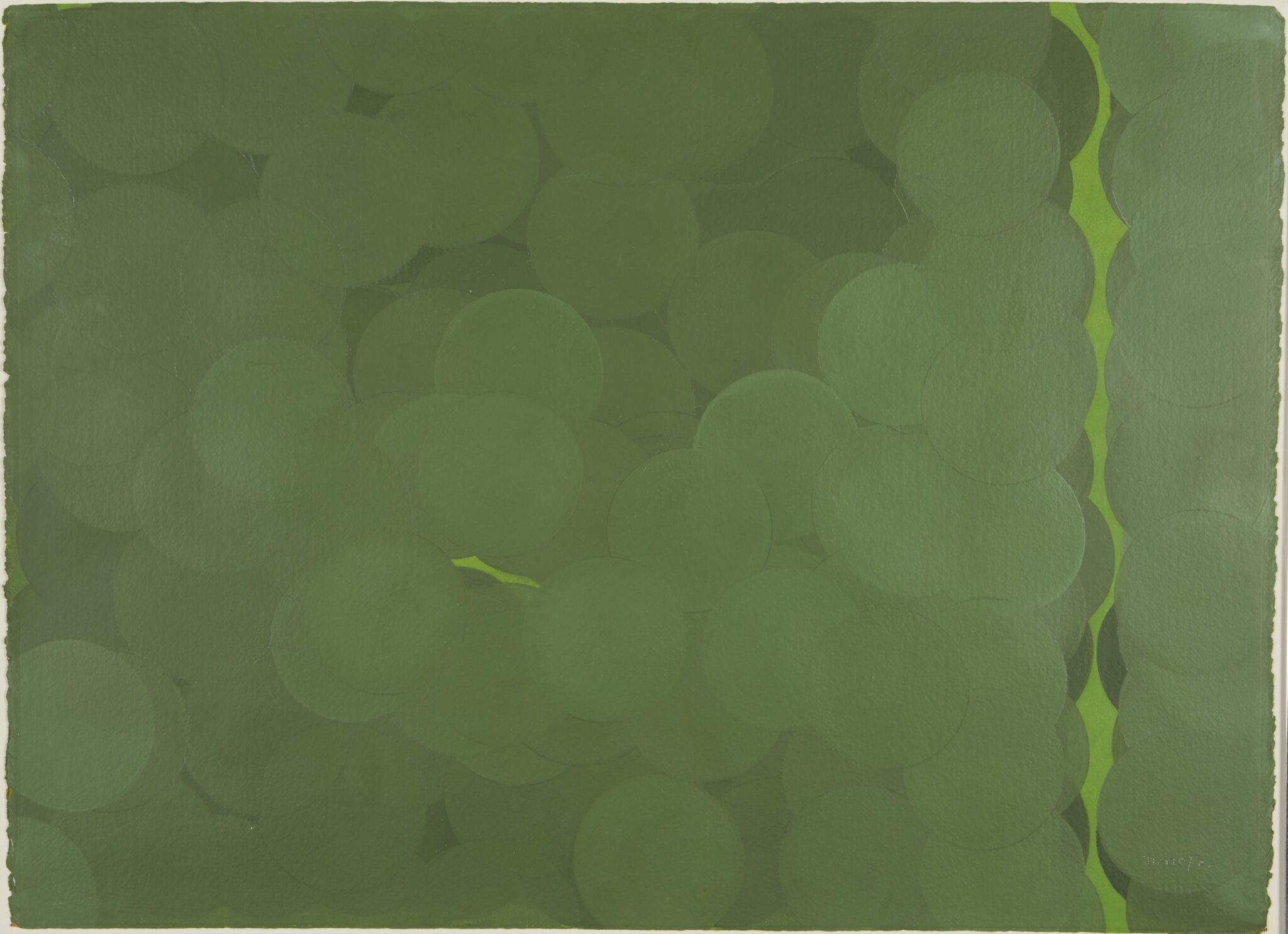
Hisao Domoto (1928-2013). Acrylic on paper titled “Solution de Continuite II,” dating to 1970. Signed along the lower right. Verso has a tag from Martha Jackson Galleries, New York City.
Provenance: Martha Jackson Galleries, New York, New York.
Helen and Otto Silha Collection, Minnesota.
Biography: Hisao Domoto was born in Kyoto to a family of artists. His uncle, Insho Domoto, was a well-respected member of the Japanese art scene, known for his works in the traditional Japanese Nihonga style, particularly his temple screens. Domoto began his art education by studying Nihonga painting at the Kyoto Municipal School of Arts and Crafts. He achieved early critical success while still in school there, exhibiting at the Japan Fine Arts Exhibition, where his work was met with high acclaim. In 1952, he traveled to Paris to study oil painting. He soon became associated with the Art Informel movement, which was flourishing in Europe at the time with its spontaneous abstractions and focus on breaking artistic tradition. He achieved great success in this style, staging his first solo exhibition in 1957 and winning prestigious awards such as the Lissone International Art Exhibition Award.
In the early 1960s, however, Domoto grew disillusioned with the Art Informel movement, and began to develop a style uniquely his own. He continued to create abstract works, but instead of rejecting tradition the way his Art Informel peers did, he looked to his traditional Japanese training for inspiration, creating careful, clean compositions. His Solutions of Continuities series marks this turning point in in his artistic mindset. In this series, which Domoto began in 1963, he broke new ground for abstract art with his technicality and intentional composition as well as his usage of traditional Japanese techniques and aesthetics.
This piece, Solution de ContinuitÈ II, painted in 1970, is a stunning example of the innovations of this series. Domotoís masterful skill is evident in the subtlety of the painting, particularly the creation of depth by using varying transparencies of paint. The clean, matte finish of the painting is reminiscent of his early Nihonga training, while the subject matter remains abstract. These elements, combined with Domoto’s own style of neat yet highly dimensional composition, make this piece a fine and unique example of Domoto’s work.
Sheet; height: 22 in x width: 30 1/4.
Framed; height: 23 1/2 in x width: 33 3/4 in.
$3,900